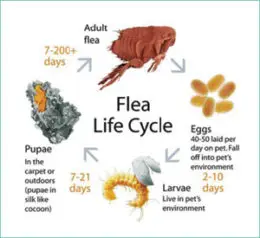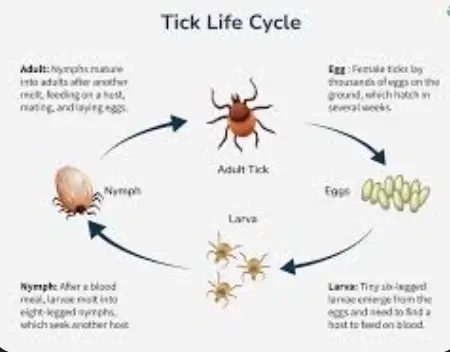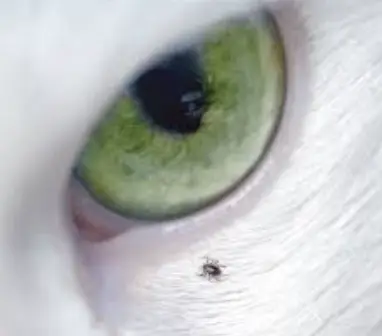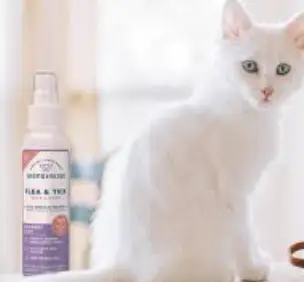Cat fleas, scientifically known as Ctenocephalides felis, are tiny, wingless insects that live as external parasites on the skin of cats and other furry animals. Measuring about 1-3 millimeters in length, these pests have a flat body coated with spines, allowing them to easily embed into a cat’s fur while feeding on their blood.
Fleas undergo a four-stage life cycle: egg, larva, pupa, and adult. This cycle can be completed in as little as three weeks under favorable conditions, which means infestations can escalate quickly. When adult fleas are present, they live, breed, and feed on their feline hosts, often causing discomfort and irritation.
Identifying a flea infestation involves recognizing signs such as excessive scratching, hair loss, and visible flea droppings in a cat’s coat. Flea bites can transmit various parasites and pathogens, including tapeworms and Bartonella (a cause of cat scratch fever), making them a health hazard to both cats and humans. Additionally, flea allergy dermatitis is a common allergic reaction that leaves cats with raw, itchy skin, further complicating their condition.
Fleas pose significant dangers to vulnerable kittens. Due to their small size, losing even a small amount of blood to flea bites can lead to anemia, which manifests as lethargy and weakness. This condition can rapidly escalate, leading to severe health issues that require immediate veterinary care and intervention.
Protecting Cats from Flea Infestations
Fighting off fleas in cats is crucial to their well-being. A solid preventive approach keeps these pests at bay and sp
ares your pet from needless discomfort and potential health problems.
Using preventive flea treatments is essential. Monthly topical treatments, oral medications, and flea collars are effective tools. Find a method that fits your pet’s lifestyle and needs, consulting with a vet to ensure the best choice.
For those leaning towards natural solutions, options include regular grooming and bathing with flea-repellent shampoos and using flea combs to physically remove fleas. Essential oils and herbal treatments can be beneficial, though they require caution.
However, commercial treatments often provide the most comprehensive protection. Many are designed to kill fleas at all life stages, reducing the chance of re-infestation until follow-up treatments are applied.
Untreated infestations can result in discomfort, allergic reactions, and other health-related issues. Flea-induced anemia in kittens is particularly dangerous, underscoring the necessity of prompt and effective treatment.
Exploring Cat Ticks and Their Detrimental Effects

Ticks are another common parasite that poses a threat to cats. These arachnids latch onto your feline friend’s skin, feeding on their blood for several days. Known for their hard exterior, they can be challenging to kill without proper removal techniques.
Unlike fleas, ticks have a life cycle consisting of egg, larva, nymph, and adult stages. Ticks typically thrive in grassy or wooded areas, making it essential for outdoor cats to be checked regularly for these parasites. Being vigilant helps in early detection and removal, preventing further harm.
Several tick species affect cats, including the American dog tick and deer tick, each with its unique risks. Signs of a tick infestation include visible ticks on the skin and reactions like redness, swelling, or localized skin infections at the bite site.
Ticks are more than just a nuisance—they’re carriers of severe diseases. Lyme disease, a common tick-borne illness, can cause joint pain, fever, and other debilitating symptoms in cats. Ehrlichiosis and cytauxzoonosis are other conditions ticks can transmit, each with potential severe health implications.
Preventing tick infestations is not just about the immediate need to manage pests but about protecting your cat from these significant health threats. Regular checks and understanding tick habitats are key to managing this risk.
Preventive Strategies Against Tick Infestations in Cats
Ensuring cats are safeguarded from ticks involves proactive measures. Prevention not only spares your pet discomfort but also shields them from serious tick-borne diseases.
Regular use of veterinarian-recommended tick preventatives is key. Options include topical treatments, oral medications, and tick collars, each offering different benefits that need tailoring to your pet’s habits and environment.
Be mindful of the environments your cat frequents. Keeping lawns mowed and bushes trimmed reduces the chances of ticks hiding in your backyard. Limiting your cat’s time outdoors, especially in tick-prone areas, can significantly reduce exposure.
Knowing how to safely remove ticks is vital. Use a pair of tweezers or tick-removal tool to grip the tick as close to the skin as possible, then pull straight out with steady pressure. Disinfect the area afterwards to prevent infection.
Monitoring your cat after any encounters with ticks is prudent. Watch for signs of illness such as lethargy, loss of appetite, or fever, which warrants immediate veterinary attention. Regular veterinary check-ups help catch any issues early.
Ultimately, staying informed and diligent in preventive care keeps your cat healthy and ensures they enjoy a life free from the threats these pests pose.
In Conclusion To Cat Flea & Tick Prevention
If you are just noticing fleas or ticks on your feline friends, take immediate action to prevent an infestation or any sickness to your cats. They can both become a huge problem for everyone in your home if ignored. There are step by step instructions to remove fleas and ticks from your home, yards and pets to keep all of you safe and healthy. Follow the links below to remove these pesky critters from all areas of your home, inside and outside, along with your pets.
If you have any questions or would like to share your own experiences dealing with fleas or ticks, please leave a comment below so we can do our best to help you. Thank you for visiting Fleas B Gone, have a great day 🙂





